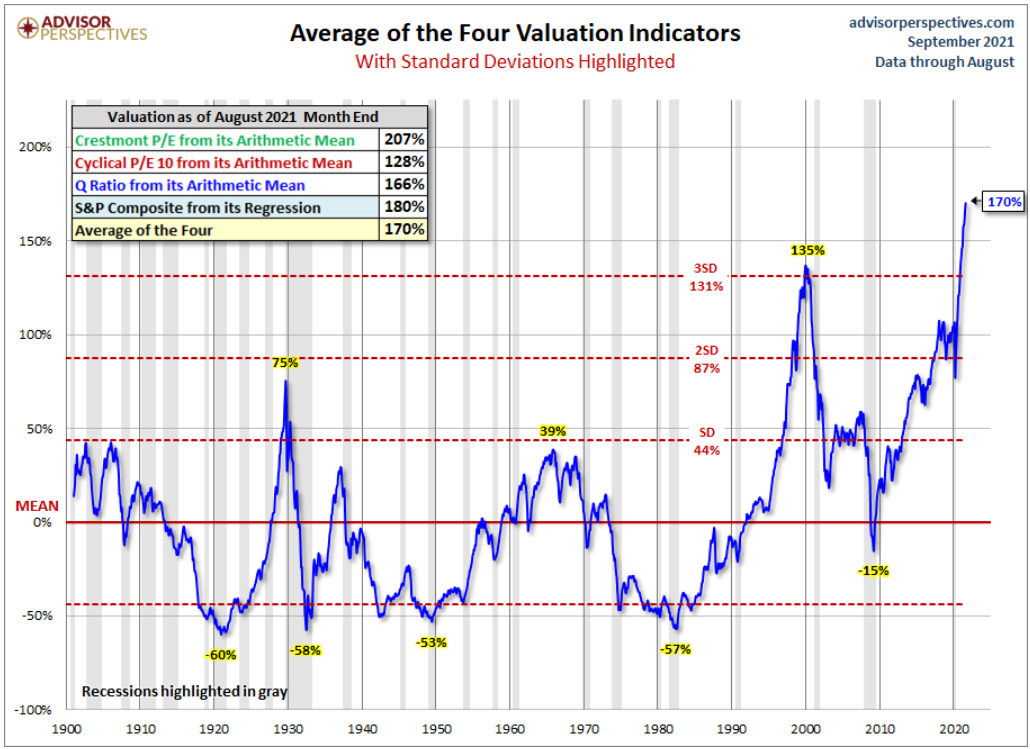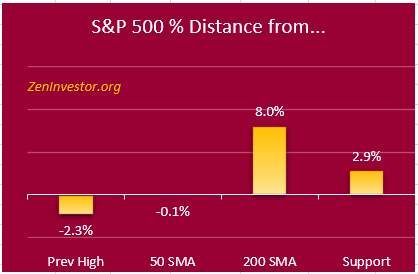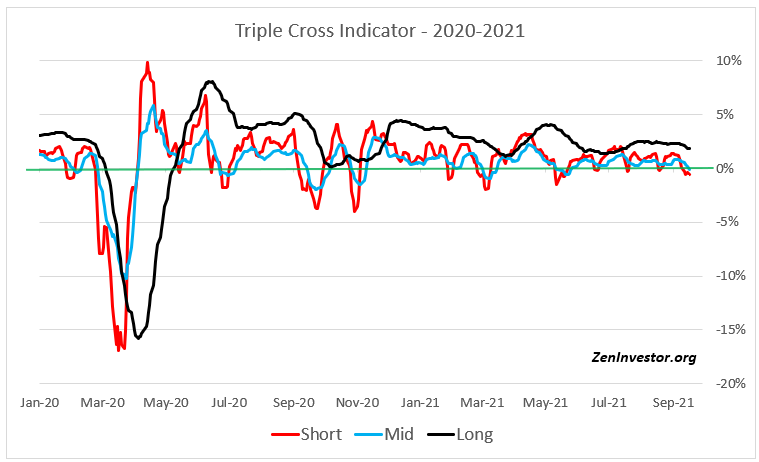A quick summary
- The market valuation bubble has leaked but hasn't popped.
- The market has dipped below its 50-day moving average.
- After racking up 54 new highs this year, the market is drifting lower.
- Consumer confidence is falling.
- Covid deaths are high and rising.
- Mask and vaccine policies are mixed and contentious.
- The housing market boom is cooling off.
- Auto sales are picking up.
The S&P 500 valuation bubble
The market is now priced at 170% of its' fair value, based on four popular valuation metrics. The chart below is from Jill Mislinski at Advisor Perspectives.
The S&P 500 has dipped below its 50-day moving average.
Market technicians like to make a big deal about this, but cooler heads don't. Watch for a quick rebound next week. If we don't get a rebound, it could spell trouble.
The elephant in the room.
The chart below shows that federal debt is now 125% of U.S. total GDP. Is this a problem? Not as long as the economy grows faster than the debt. But this chart doesn't include the possibility of a large infrastructure spending bill.
If the economy should stumble, or if interest rates should climb faster than the FED likes, or if inflation should become sticky, market valuations could begin to revert back to normal levels. That could cause a negative feedback loop for asset prices.
Consumer Confidence is falling.
The post-lockdown consumer confidence and spending binge peaked in April and has been trending lower. Blame it on Covid, or the end of stimulus checks, or the end of enhanced unemployment benefits. Or maybe consumers are just unwilling to pay higher prices today because they believe prices will be lower tomorrow.
The housing market is cooling off.
The next two charts show the drop-off in both existing home sales and new home sales.
Auto sales are still going strong.
Let's end on a bright spot - auto sales. They have been in an uptrend since the end of the pandemic recession.
Final Thoughts
The market has doubled since March 23, 2020. I'm advising clients to stay invested until the music stops. How will we know when the music has stopped? Watch the dip-buyers.
For the past year they have rarely allowed the market to decline by more than 5% before stepping in to save the day. Watch for a decline of 5%, followed by a rally that fails to make a new high.
If the market then declines to, or close to, 8%, it could mean that the dip-buyers are losing some of their confidence. And without them, the sheer weight of high valuations and massive debt could stop the music.
Triple Cross Indicator
This chart tracks the movement of three moving averages - short, intermediate and long-term. When all three lines are above zero (the green line), investors can maximize their allocation to risk assets like equities.
As the lines begin to fall below zero (usually one at a time), investors can dial back their risk exposure in increments. The allocation model I use with this indicator never goes below 25% equity and 75% cash or cash equivalents.
The model has performed well, returning 28.4% in 2020 vs. 16.3% for the S%P 500. The model is on track to return 22.4% this year, based on its current trajectory.
If you want more information about the Triple Cross Indicator and the allocation model I use with it, email me at info@zeninvestor.org








